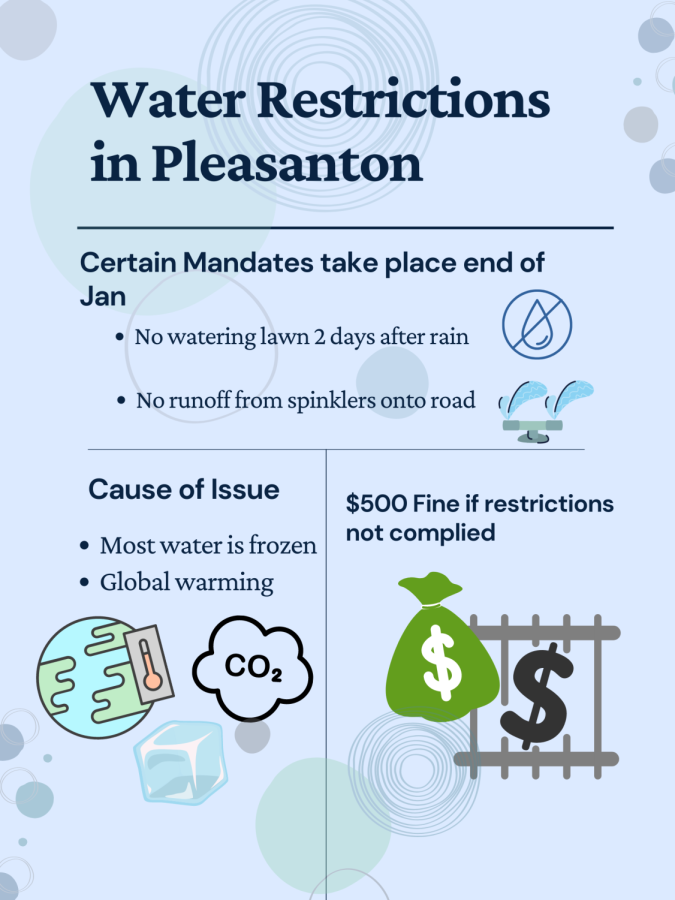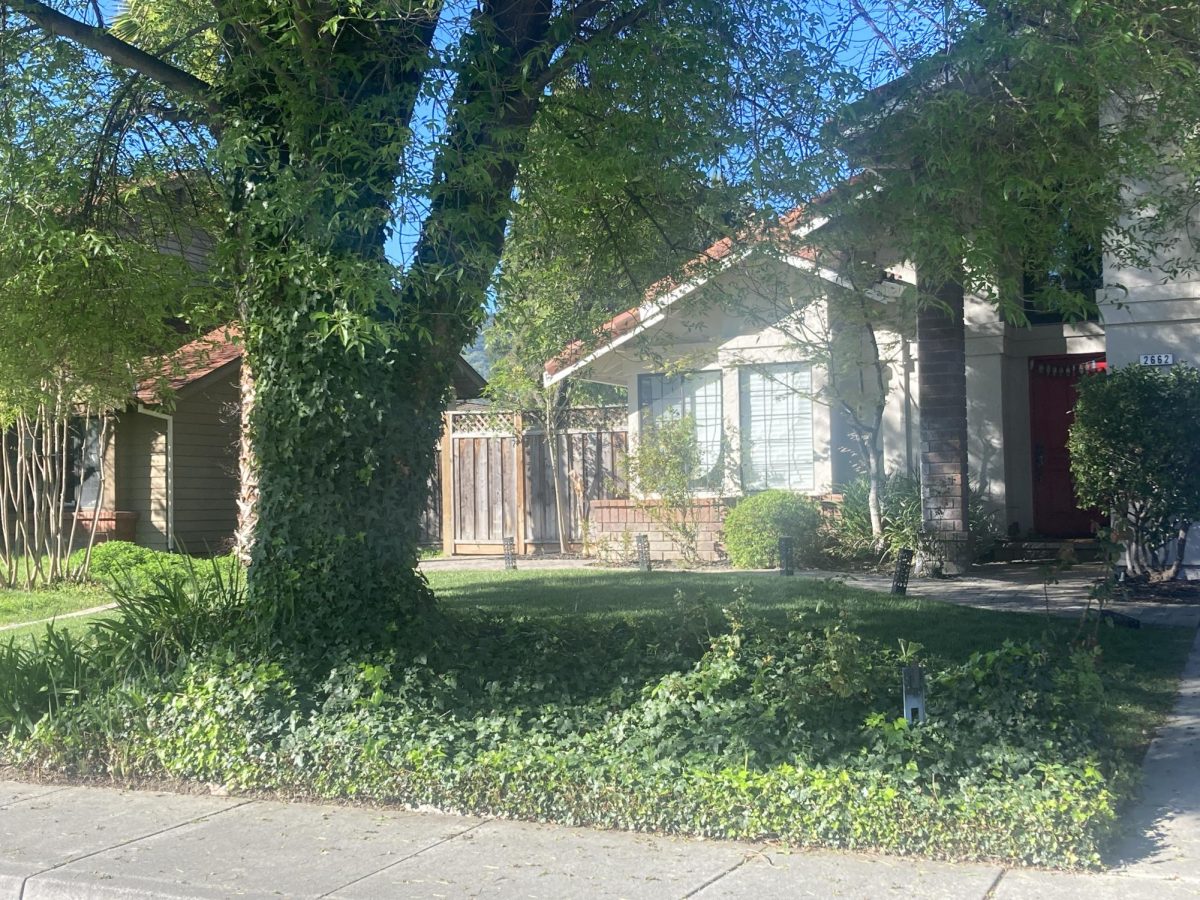Water restrictions continue in Bay Area
Governor Newson has been stressing for private water companies to decrease water consumption voluntarily.
March 31, 2022
UPDATE: Following one of the driest Januarys and Februarys on record, Governor Newsom, on March 28th, declared California to up the notch in conserving water. The restrictions from the end of January were largely ignored, and California’s water consumption actually increased by 3%.
However, with Newsom’s largely localized plan, urban water suppliers are required to submit plans for water conservation every five years. These plans are based on a six-stage system, ranging from calls for a voluntary reduction to requirements for cutting water consumption by half.
As California’s drought continues, the state has mandated certain restrictions on water which take place at the end of January. These restrictions will alleviate the strain on the water supply, as California heads into an unpredictable February and March.
These restrictions include not watering a lawn two days after rain, and not letting runoff from the sprinklers on the road.
“Even though we’ve had good snow so far, we still have a couple of months to go and there’s no telling temperature-wise whether or not the snow will stick long enough. The state of water in California is really precarious,” said AP Environmental Science teacher, Robyn Fewster.
Despite the increased rain in December, these restrictions will alleviate the strain on the water supply, as California heads into uncertain weather changes in February and March. Though administered rarely, fines for not complying with the restrictions run around $500 a day.
“We are massively over-pumping our aquifers, which is actually causing the land to sink, which means land won’t be able to absorb as much water, and we will have less in the future, [especially] if it all becomes liquid,” said Fewster.
However, there are more factors for the depleting water supply. Weather and temperature fluctuations are all because of global warming.
“With climate change, we’re seeing more weather extremes, meaning more droughts, and then conversely, more floods, and a little bit of back and forth, in what people are calling weather whiplash,” said Alexandra Ramirez Holmes, President of the Zone 7 Water Board.
Since the restrictions apply only to communities, they won’t fully ease the statewide water crisis that California is experiencing.
“For the entire state of California, the amount of water consumed by the communities is relatively small. It’s mostly going into agriculture. So communities are not going to affect the overall big-picture but within that community,” said Fewster.
Though the impact is less, communities around the Tri-Valley have made many changes to their lifestyle in terms of water use.
“Our overall savings goal is 15%, [and] in December, the Tri-Valley saved 16%, which is great news,” said Holmes.
Additionally, with California’s experiences of drought over the past years, the changes that people have made have helped their communities immensely.
“But most of these things people in Pleasanton have already done things like only running full loads of dishes in your dishwasher or your clothes washer,” said Holmes. “California has really adopted this water, viewing water as a sort of conservation as a way of life.”
California’s water problem is an ongoing problem, but new restrictions and water habits can considerably lessen the strain on the water supply.
“[The solution would be] more sustainable use, better watering practices, better choice of crops, [those] kind of things,” said Fewster.






